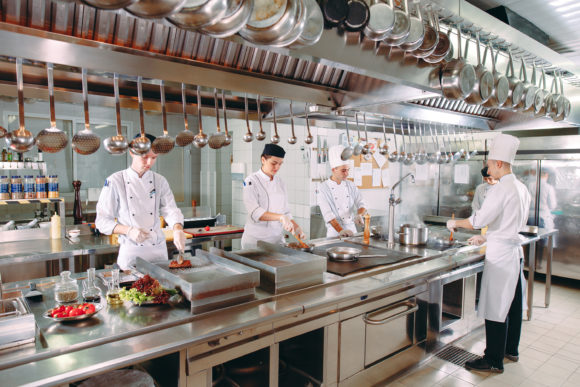According to a new report by AmTrust Financial Services, while overall restaurant injuries are down, specific injuries, including crushing, fainting, inflammation, strains and mental stress, are up significantly compared to pre-pandemic numbers.
AmTrust’s findings were based on nearly 170,000 claims and were published in the company’s 2022 restaurant risk report. That document identifies common injuries and the resulting time off work for restaurant workers, as well as trends and prevention methods to reduce injuries and help keep employees safe.
“Restaurant workers can face high stress levels, especially with staffing shortages,” said Matt Zender, senior vice president, workers’ compensation strategy at AmTrust. “Restauranteurs should lean on their onboarding experience to ensure employee safety. They can use this opportunity to help demonstrate what makes their operation unique and use resources from their workers’ compensation carrier to help address injury risks in advance of an accident.”
Key findings from the report include:
- Injuries are the highest in July and lowest in January, February, September, and November
- Strains are up 23% compared to pre-pandemic numbers in 2019
- Loss control tips on how to reduce the most common injuries
Over the 10-year period:
- Motor vehicle injuries cost the most on average with nearly $20,000 paid out per claim, 1,215% higher than cuts (the most common injury)
- Total reported losses show that cuts are 30% more common than falls but falls have resulted in 410% more incurred claim expenses
AmTrust also reported that factoring in the number of active payroll employees, reported injuries were down 25% during 2020 and remained below pre-pandemic numbers in 2021. However, compared to 2019, mental stress claims skyrocketed 71% during 2021.
In related news, Marsh recently announced the results of a restaurant risk management survey in which 49% of respondents said they haven’t conducted a formal assessment of hazard exposures in the past two years. This marked a significant increase from 2020, when that number was just 33%.
“The pandemic led restaurant operators to get creative on how they could serve their guests and stay within the guidelines of their specific state regulations,” said Kristi Whistle, a restaurant specialist with Marsh. Examples of this creativity include outdoor dining and multi-lane drive-through service.
“So these are relatively new exposures for a lot of these brands,” Whistle explained, “which bring new risk. And a formal hazard assessment, it’s important to do those for these new jobs that maybe didn’t even exist in 2019.”
Topics COVID-19
Was this article valuable?
Here are more articles you may enjoy.



 California Commissioner Moves to Implement Insurance Rate Review Reforms
California Commissioner Moves to Implement Insurance Rate Review Reforms  Debby’s Florida Claims Already Near 12,000 as Yaworsky Says Market Is Strengthening
Debby’s Florida Claims Already Near 12,000 as Yaworsky Says Market Is Strengthening  Labor Market Study: 14% of Carriers Plan to Reduce Headcounts
Labor Market Study: 14% of Carriers Plan to Reduce Headcounts  Wall Street Firms to Pay $470 Million to Settle With US Regulators Over Texting
Wall Street Firms to Pay $470 Million to Settle With US Regulators Over Texting 

